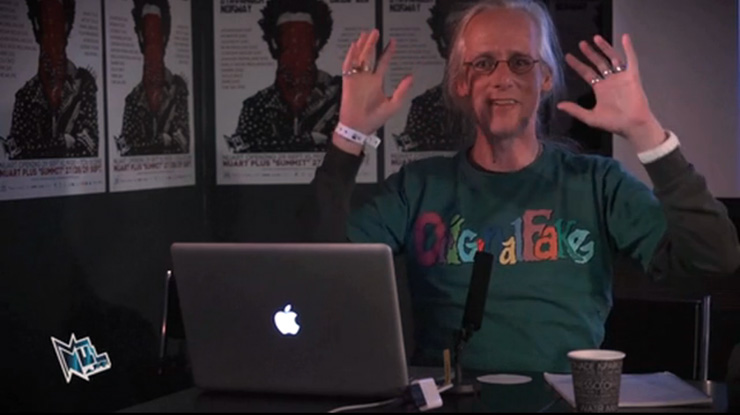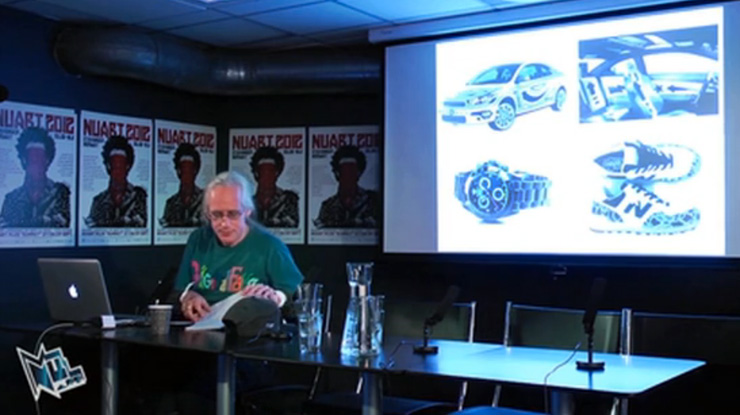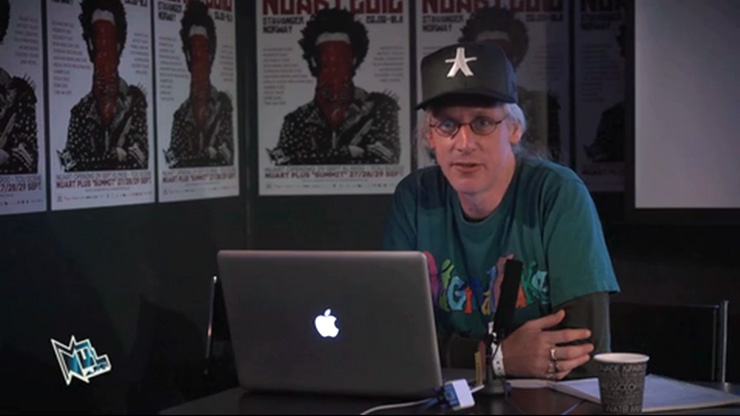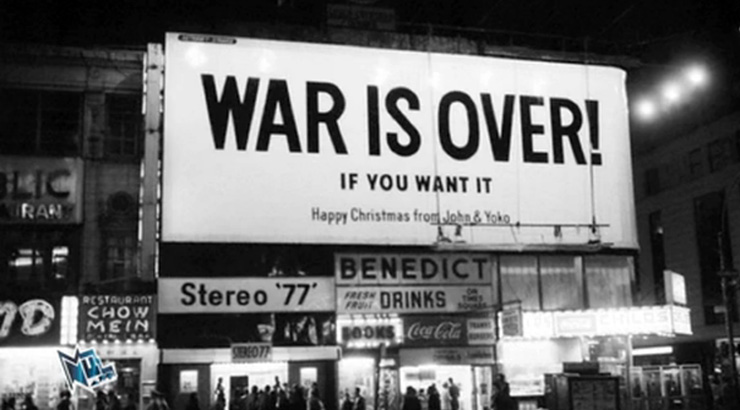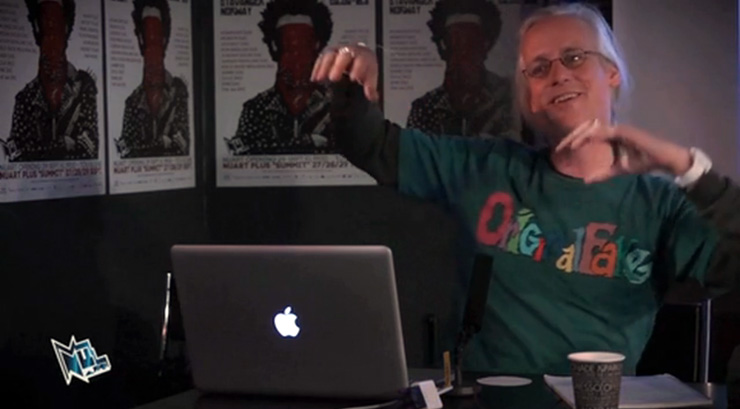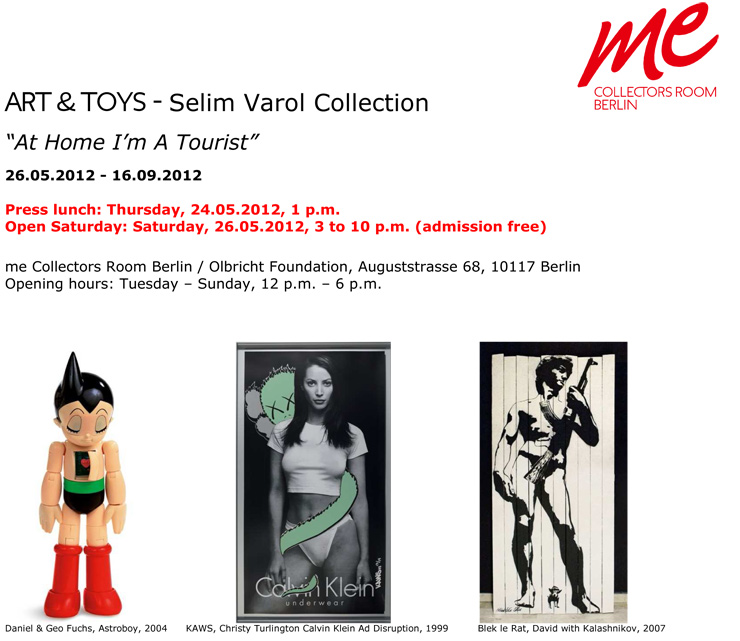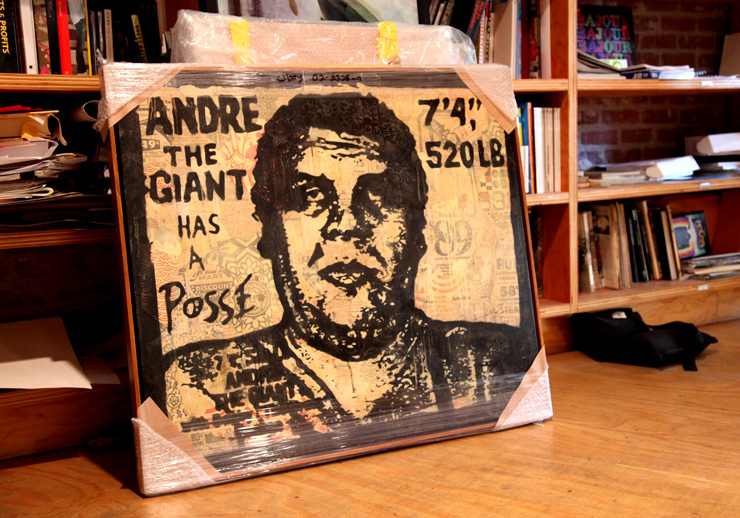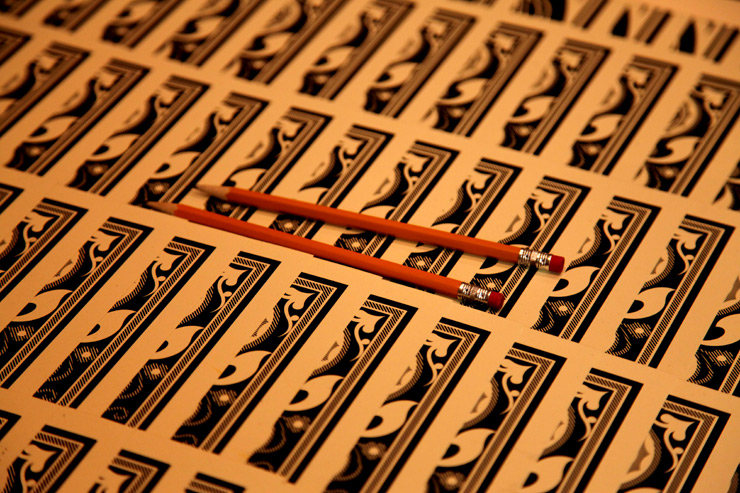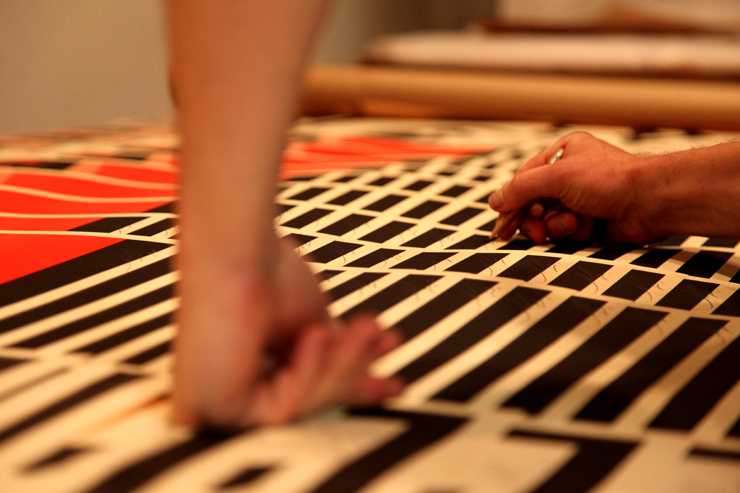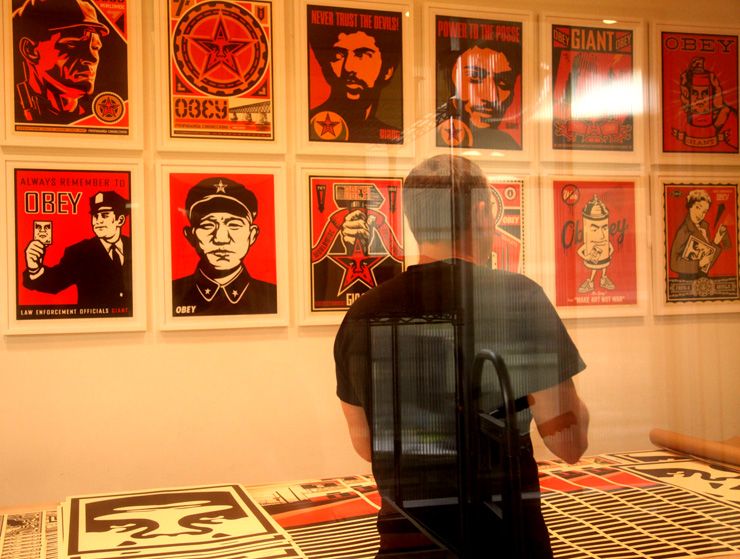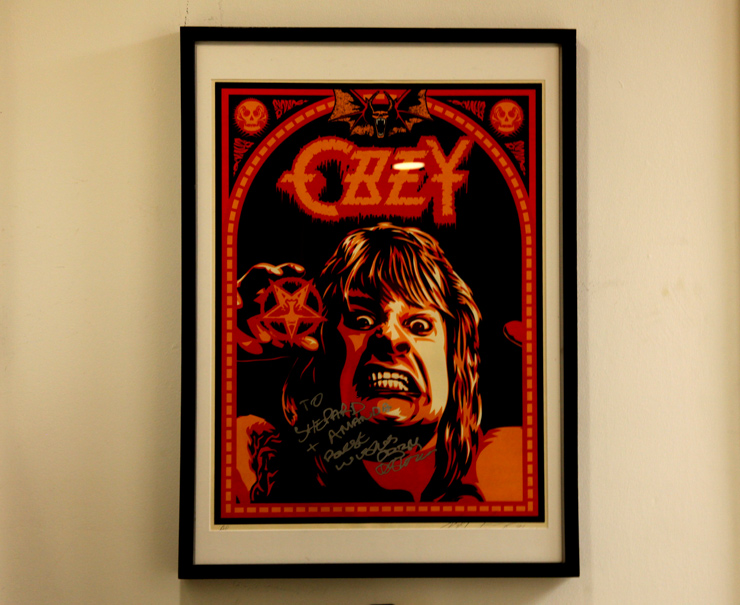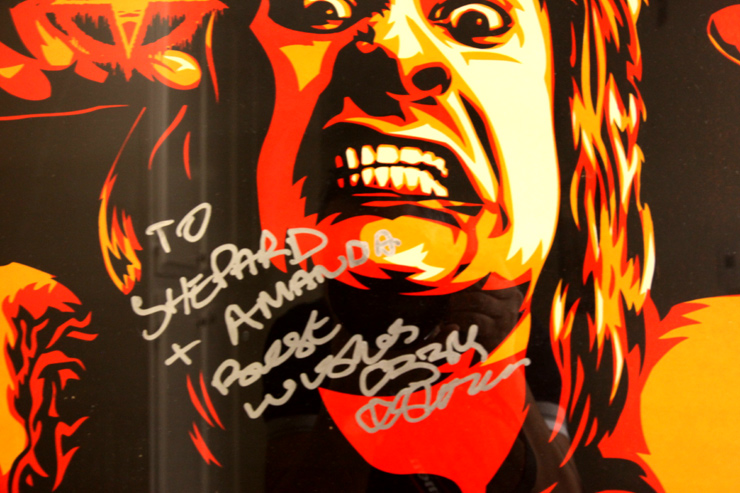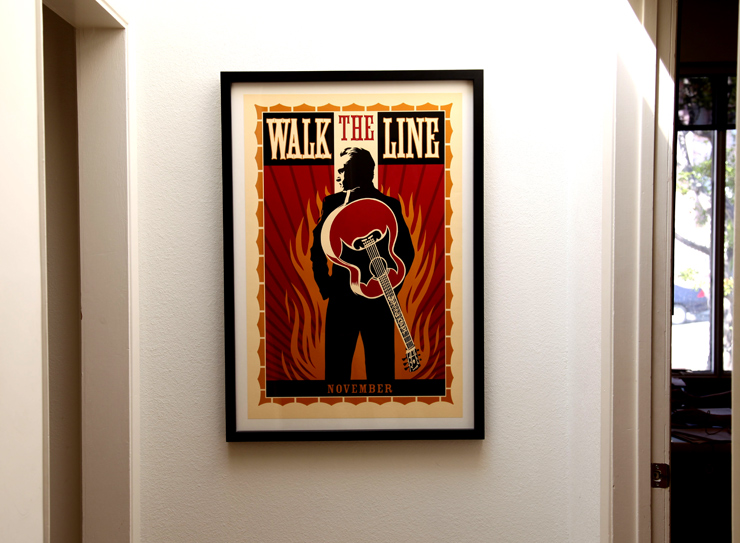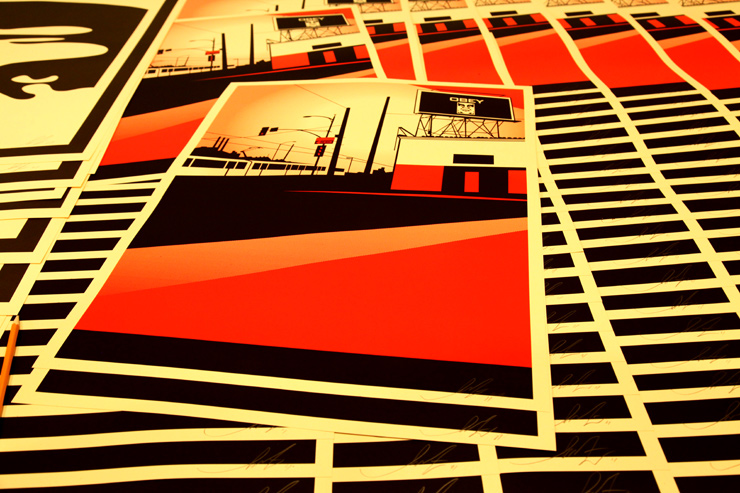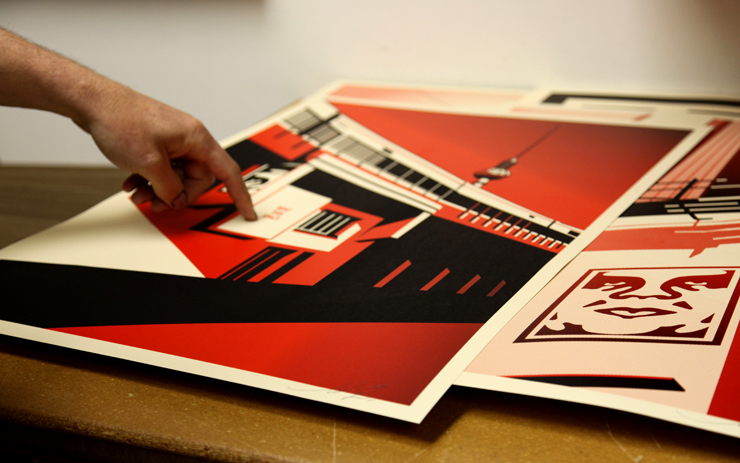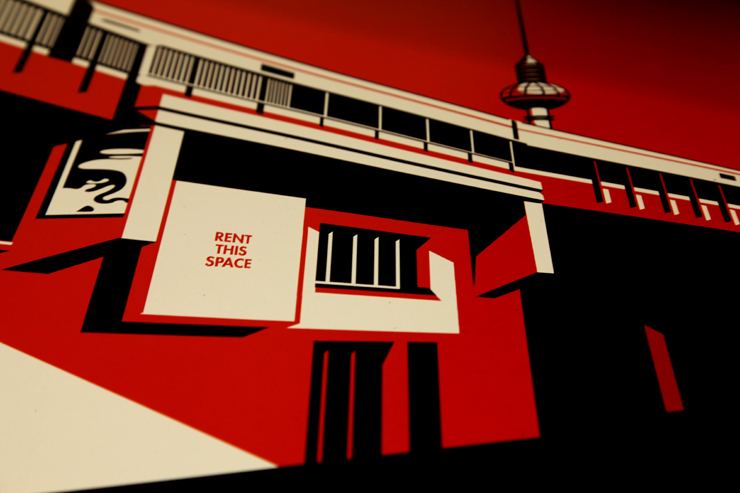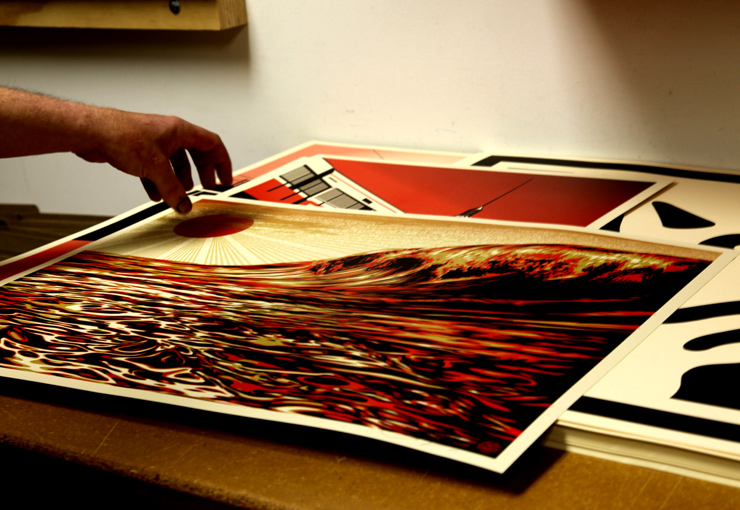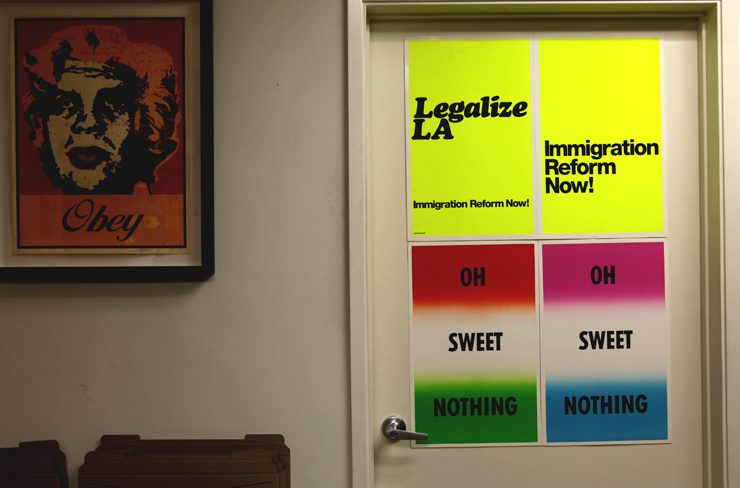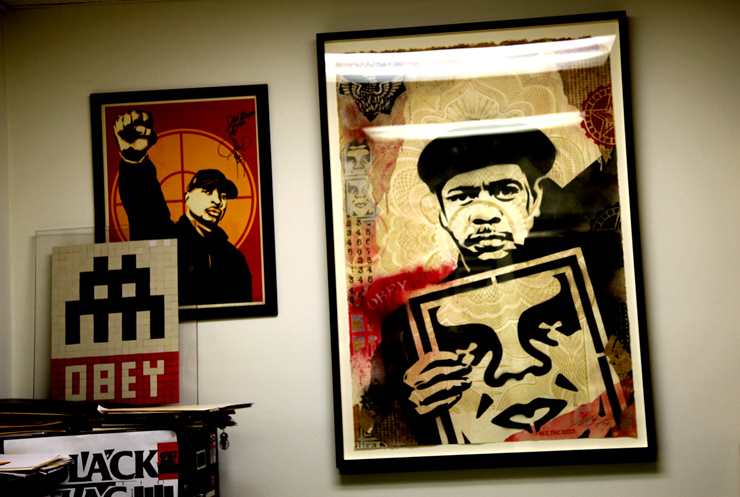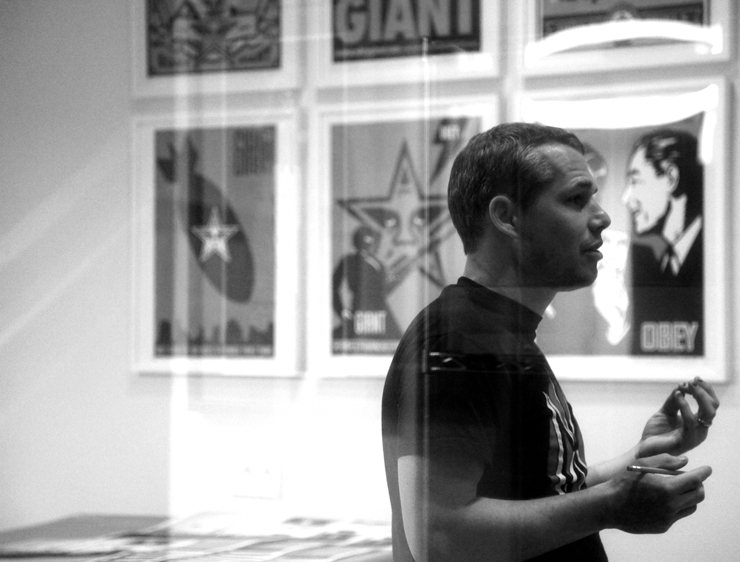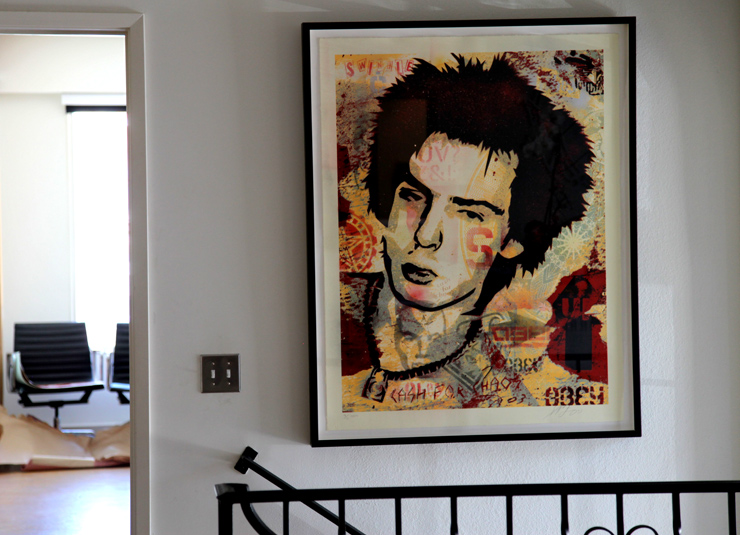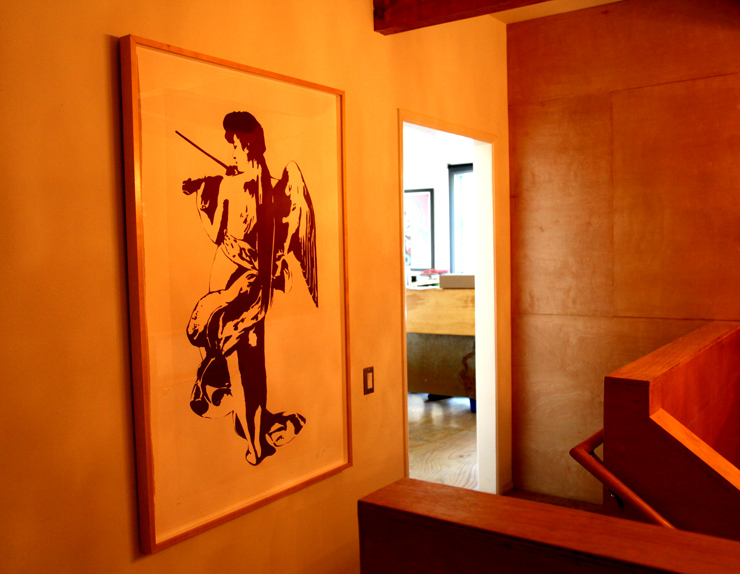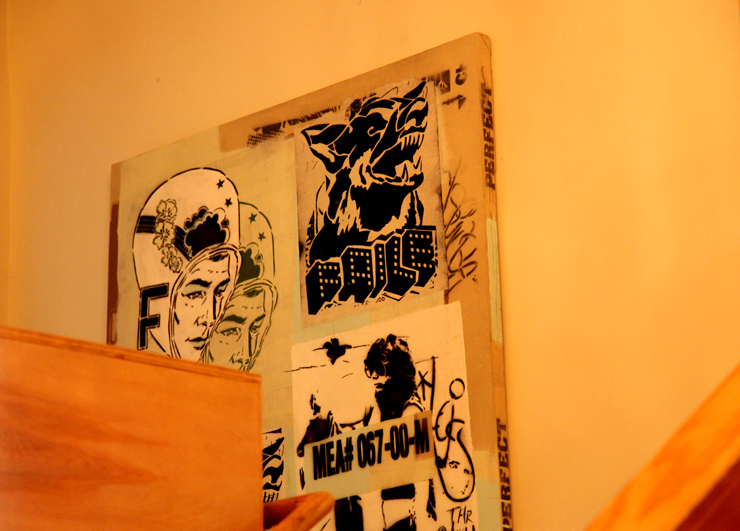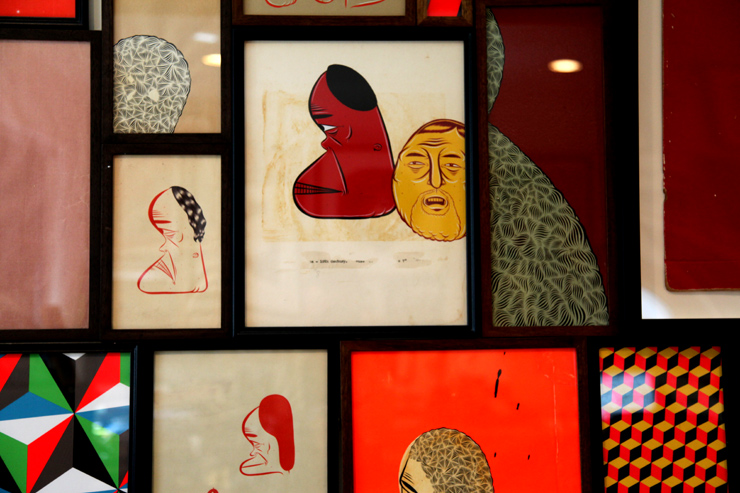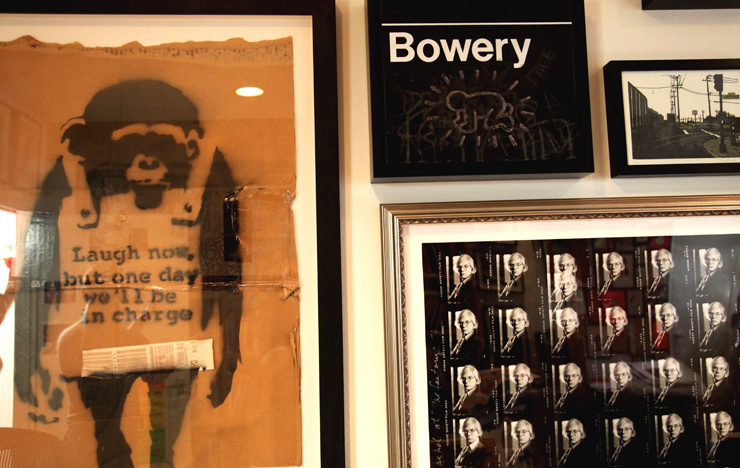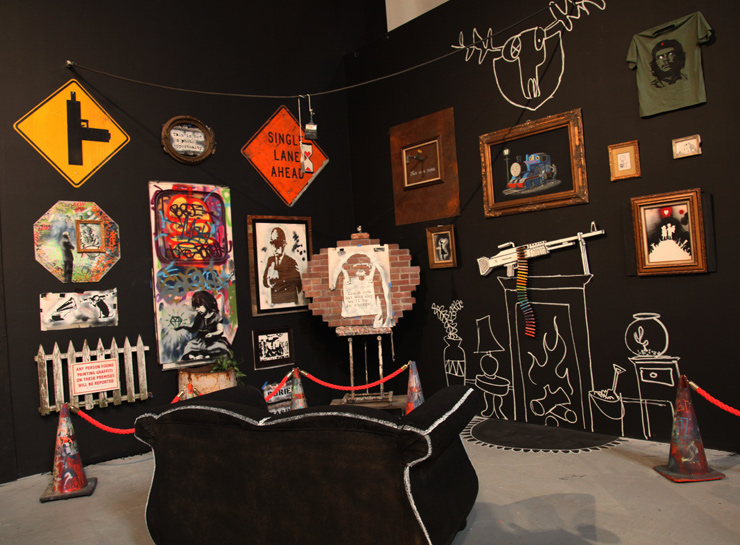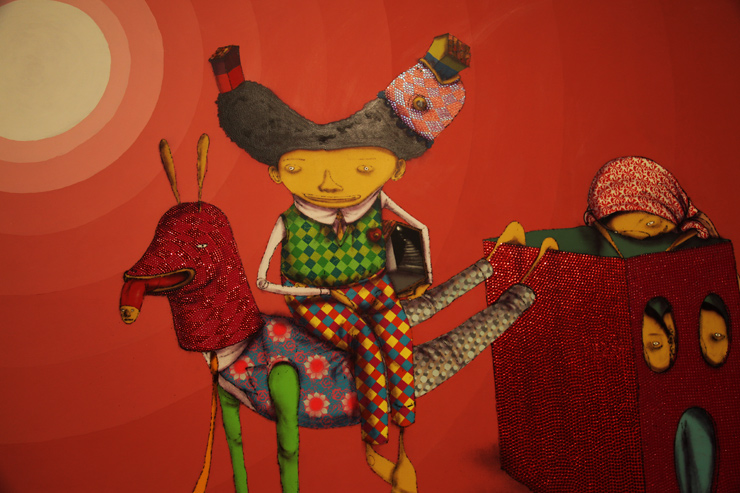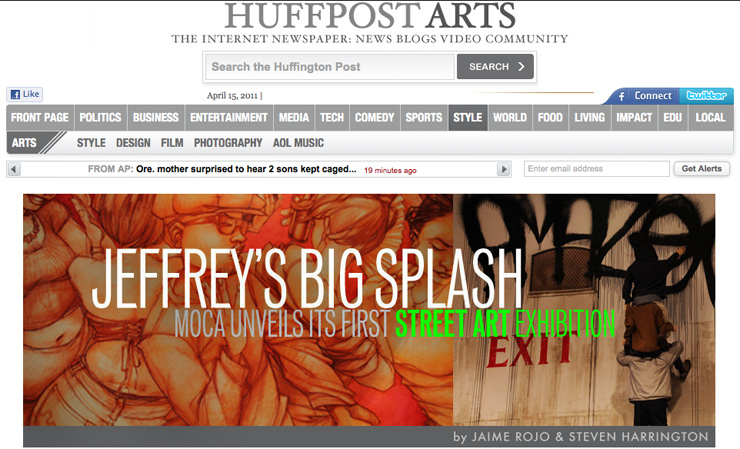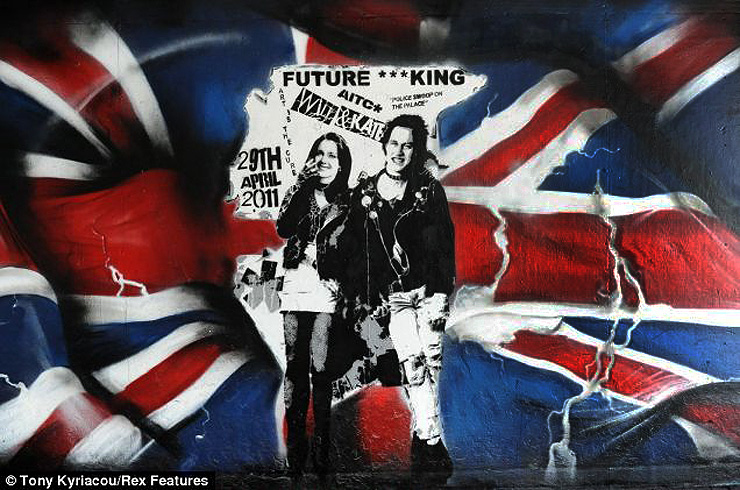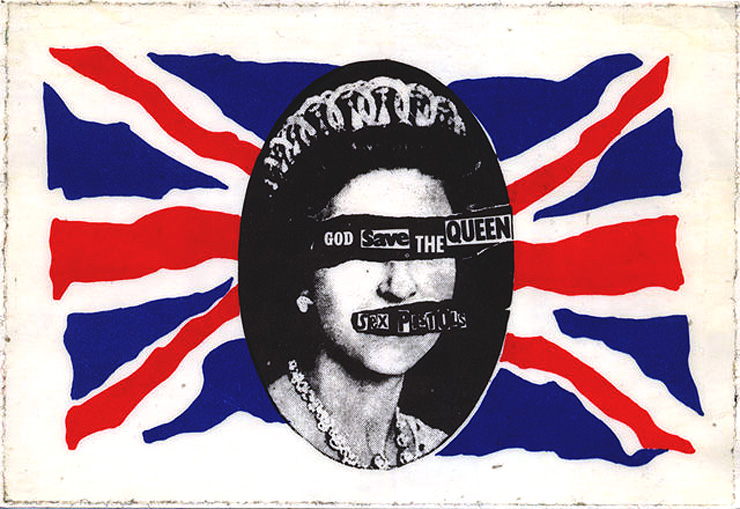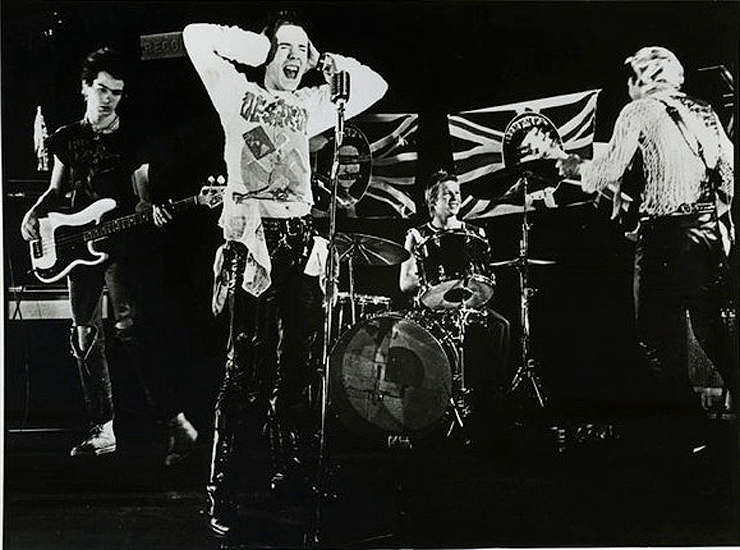One of the best parts about a celebration of Street Art culture like Nuart in Norway is that there sometimes is an opportunity to speak with and listen to people who make it their mission to put it into context. New York art critic, curator, editor, and writer Carlo McCormick has an exhaustive knowledge and enthusiasm for the scene that evolved on Manhattan’s Lower East Side in the 1970s and 80s concurrently with the evolution of graffiti into a celebrated art form. As Street Art continues apace, having perspective on some of its precursors is imperative and McCormick knows how to bring it alive.
An moment of elation with Carlo McCormick while he addresses the Nuart audience in his keynote presentation Re:mark. (image still © Nuart 2012)
To hang out with Carlo on the street is a joy because he can ground your current observations with his knowledge of their antecedents and yet become as equally appreciative of the new artists on todays’ scene whom he hasn’t heard of. During this talk he gave this year at Nuart in a very conversational somewhat meandering unscripted way, Carlo reveals the mindset that is necessary to keep your eyes open and appreciative of the new stuff without feeling territorial or enslaved to the past. We appreciate him because he recognizes that the march of graffiti, street art, public art, and it’s ever splintering subsets is part of a greater evolutionary tale that began before us and will continue after us.
Carlo speaks about New York artist Haze and the distinct parallels between corporate branding with the practice of developing and distilling one’s tag for repetition on the street. (image still © Nuart 2012)
Carlo at ease, conversing with you. (image still © Nuart 2012)
During his presentation McCormick dedicates a significant portion of his remarks to the historical practice of subverting advertising and official forms of messaging – referring to the Situationists, “détournement” and similar methods of playing with perception and turning it on it’s head. Here is an uncredited image from his presentation of a Times Square scene where artist Yoko Ono’s billboard toyed with the perceptions that the Vietnam war was inevitably unending while also alerting a compliant citizenry to it’s role in the matter. (image still © Nuart 2012)
“As I do my best as a really bad scholar to investigate this history of graffiti and mark-making – kind of prior to the official history – the greatest evidence that I find of stuff is in the real canon of fine art photography. Just about every famous photographer turned – I mean it’s not incidental – turned their attention to this illicit anonymous practice., ” Carlo McCormick at Nuart.
 BROOKLYN STREET ART LOVES YOU MORE EVERY DAY
BROOKLYN STREET ART LOVES YOU MORE EVERY DAY